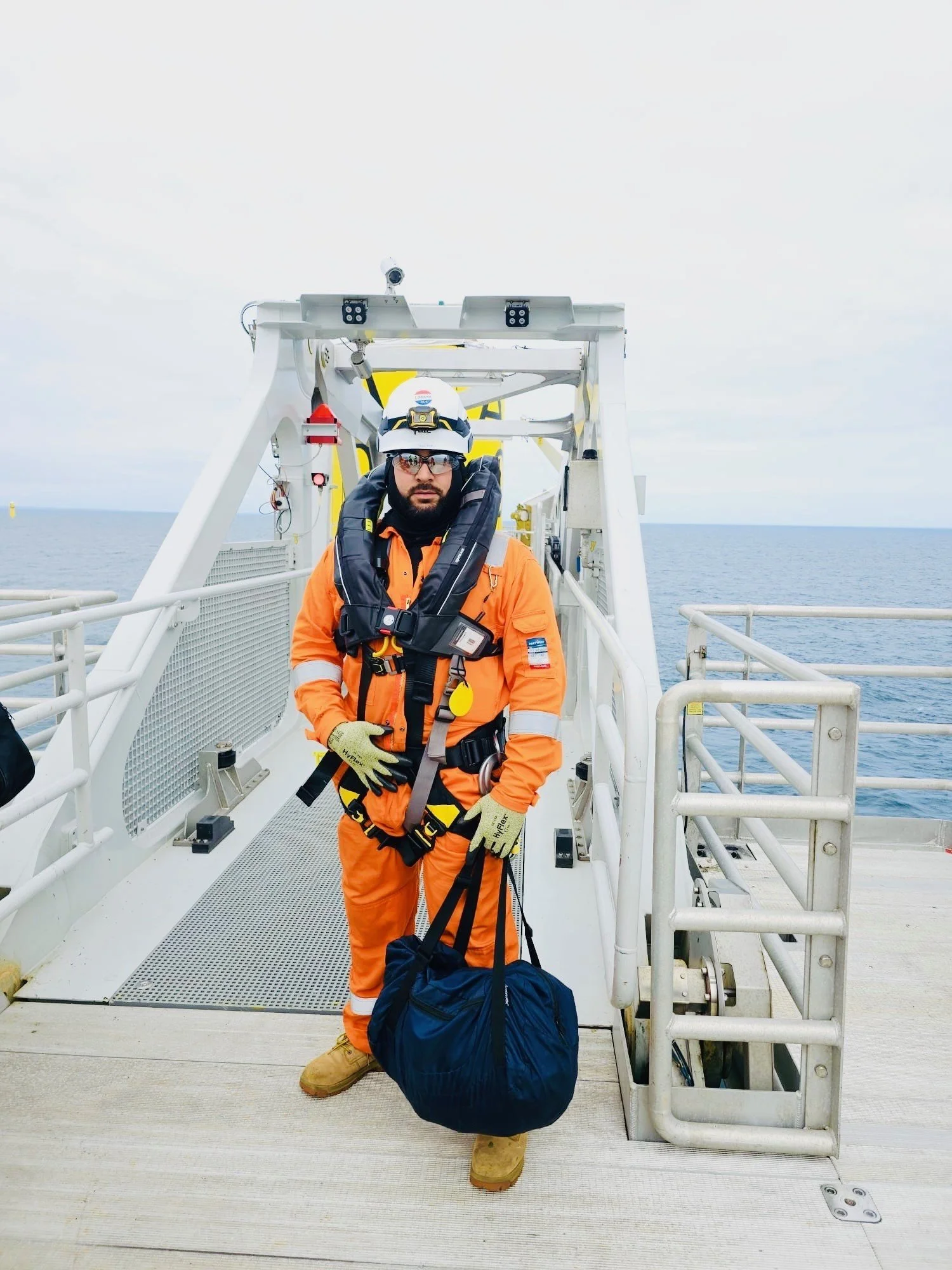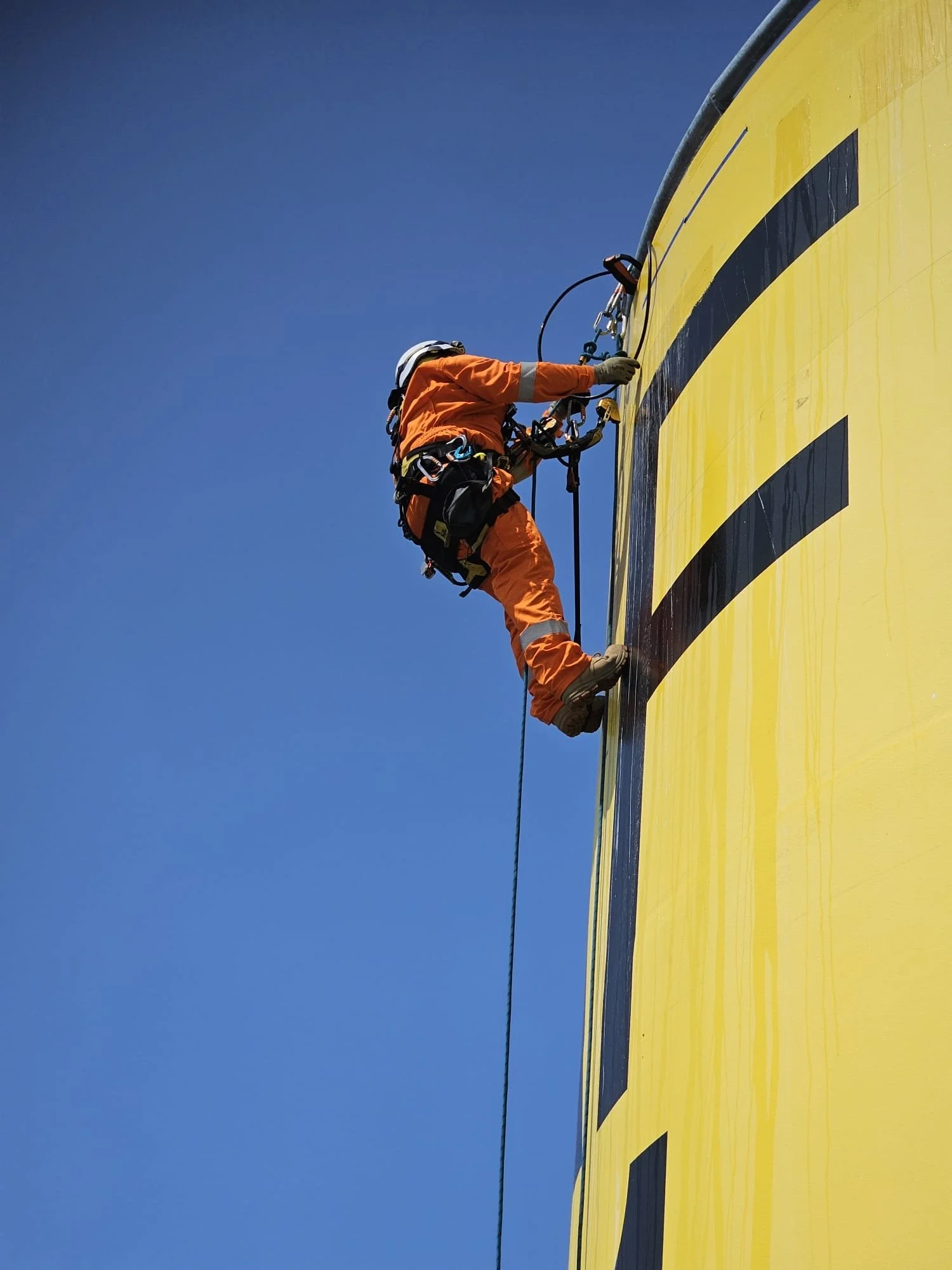Union Hands in the Wind
Hundreds of feet above the Atlantic, Local 195 painters are building the future of energy—one coat at a time.
This is what climate action looks like: skilled union members applying protective coatings to offshore wind turbine platforms, ensuring they can withstand harsh ocean conditions for decades to come. It’s technical work. It’s dangerous work. And it’s done with precision, training, and pride.
These platforms will one day help power thousands of homes with clean, renewable energy. But they won’t last without the specialized labor of union painters—experts in corrosion protection, safety, and surface prep in the most extreme environments.
What Is Offshore Wind, and Why Does It Matter?
Offshore wind turbines capture the power of ocean winds to generate electricity. Each turbine is a feat of engineering—often taller than the Statue of Liberty—and can power thousands of homes. But long before a turbine spins, it needs a strong foundation. That’s where union trades come in.
Painters from Local 195 apply high-performance coatings that protect turbine platforms from rust, salt, and storm damage. This isn’t your average job site—this is industrial painting in the middle of the ocean.
A Green Future at Risk
Projects like SouthCoast Wind promise thousands of jobs and a path to energy independence. But that path is now uncertain.
As reported in Rhode Island Current, SouthCoast Wind just faced its fourth major delay, and for the first time, developers are warning it may not move forward at all.
If this project is canceled or further delayed, it won’t just slow our clean energy goals—it will cost real people real work. Union painters are already trained and ready. The jobs are here. But the investment and political will must follow.
DC 11 Local 195 member Hector Fernandez working on the Revolution Wind project off the coast of Rhode Island.
Why Union Labor Matters
This kind of work isn’t just specialized—it’s essential.
Union painters are trained in hazardous coatings, confined spaces, rope access, and marine-grade applications.
They get the job done safely, efficiently, and to spec—protecting millions of dollars in infrastructure.
They earn wages that support families and communities.
When clean energy is built by union labor, it’s built to last.



